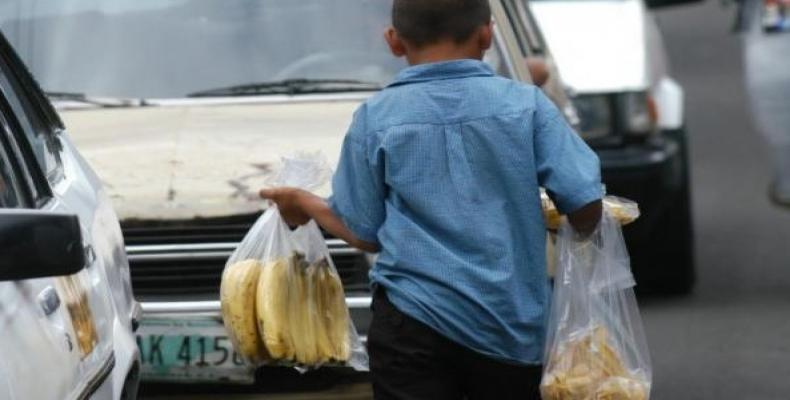Quito, August 29 (teleSUR-RHC)-- The number of working children under 15 years old has dropped in Ecuador from 15 to two percent in over a decade, the National Institute of Statistics and the UNICEF revealed during the presentation of a joint report on Thursday.
As for teenagers, the study found a decrease of almost 28 percent over the same time period (2001-2013). The three Ecuadorean provinces that showed the greatest decrease in child labor (about 20 percent) were Cotopaxi, Bolivar and Chimborazo, with rural areas still the most affected. Children in rural areas work five more times than in urban areas, while rural teenagers over 15 work triple that of their urban counterparts. Indigenous children are fives time more affected than Mestizo children
This significant improvement is due to state regulation in the labor department, said UNICEF representative Grant Leivit, especially under the presidency of Rafael Correa.
“This reflects a commitment and a policy of the state,” he said, adding that the eradication of labor work also required the participation of the manufacturing sector, public as much as private.
With regards to “cultural customs,” Leivit recommended campaigns of awareness directed to the parents, who sometimes use their children in the workforce. This socio-cultural factor explains why the labor situation of the country, as well as the parents' level of education, are crucial issues to be addressed in order to reduce child labor, he insisted.
In the 1990s, deregulation in the labor sector resulted, among other consequences, in the employment of minors, considered a “cheap” labor force, added Alison Vascones, one of the report's author.
But three factors have made a vast difference in recent years: (1) the improvement of the global employment situation in the country in recent years, (2) better and free access to school, reducing school desertion of children, and (3) the role of the Ecuadorean State, which implemented various measures and agreements with the production sector, in order to reduce child labor. As a result, both sectors that have employed the highest number of children – agriculture and trade – have respectively reduced their figure by 66 and 15 percent.
The current Labor Code formally prohibits the employment of children under 15 years old, while the labor day for teenagers over 15 cannot exceed six hours per day and 30 hours a week, without interfering with his or her education.
Nevertheless, the report found that girls are still employed to do household work without receiving any profit.
Experts proposed that more work is needed on social programs with a special emphasis on rural areas, for instance, agreeing that eradicating child labor does not just consist of preventing minors to work, but also to find ways to re-integrate them as quickly as possible in the education and health systems.


